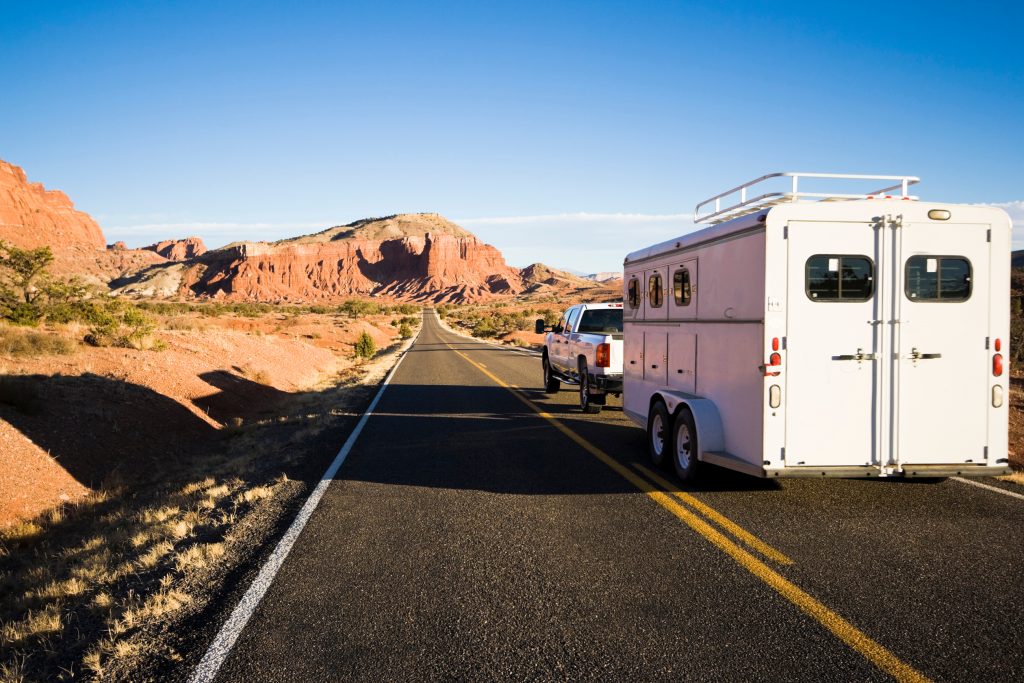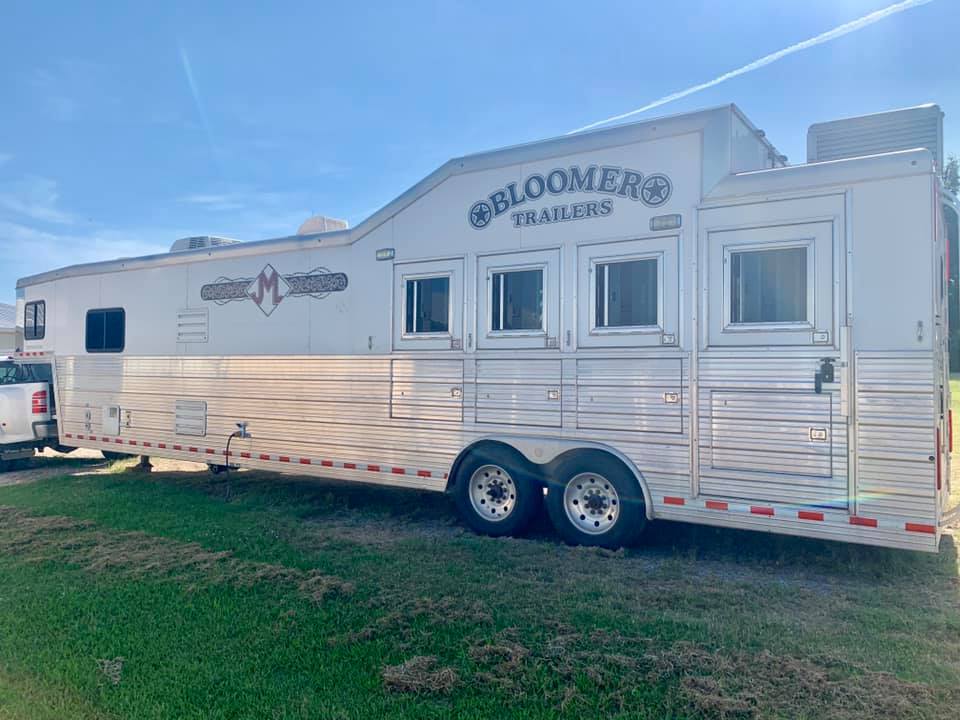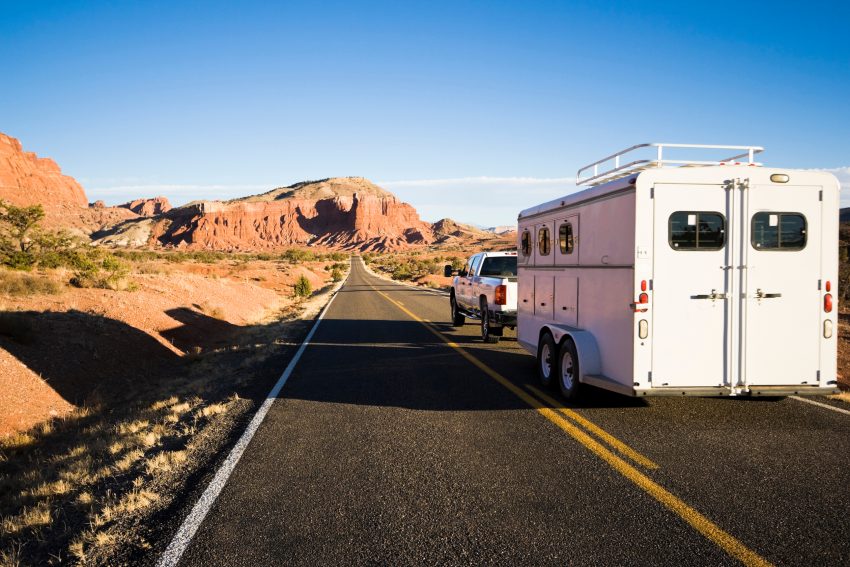One of the most important possessions a rider can have is reliable transportation. With so many options out there, how do you know what is the right one for you?
In this two-part series, we spoke with some extras to find out what is most important. They all agreed that the “right” rig is the one that fits your needs, wants, and budget.
In this issue of WorldWide Slide, we’ll focus on the truck.

The Truck
For Patrick Welch, Pre-Owned Manager for Billingsley Ford in Ardmore, Oklahoma, knowing how hard a truck will have to work is the first step to determining which is the best option.
“The first thing I have to find out is if it will be doing a job regularly, and if the truck is towing a trailer, that’s pretty much doing a job,” he said. “Once I know that then we grade what type of job is it going to do.”
Welch said he’ll then ask about the size of the trailer, if it has living quarters, and what size. He will also find out the number of horses that will be hauled, and the typical distance traveled. “Obviously someone who is going to go to a weekly jackpot a couple times a month will have vastly different needs than someone who is on the road as a professional,” he explained.
Single-wheel pickups have become more popular in recent years, and Welch said they are definitely a viable option. “If you have a pretty balanced option, a single-wheel pickup can be very competent. For example, I have a 35-foot toy hauler fifth-wheel camper, and I pull it with a single wheel because it’s balanced. If I was to go up to a 4o-foot, I would change to a dually, because that size will shift my pickup around. Plus, when it comes to the weight that is on that trailer between the truck’s rear axle and the trailer’s axle, that weight can push the pickup around. Trailers can push on that single-wheel pickup
more than the dually because the dually will stand up firmer and steadier.”
Welch’s wife showed horses, and the couple chose to go with a dually. “I chose that because I would rather her have the stability than be under-trucked. The living quarters that so many people pull now almost always call for a dually because they are so heavy up front.” He added, “You know, a front tack or a
light weekend package upfront can definitely be fine for a single-wheel truck. But when you get to a five horse with a full tack up front, and fill it with your hay, feed, tack, and horses, it adds up to dually weight.”
When it comes to diesel versus gas, Welch noted there are situations where each are suitable. “A gas truck will work well with a regular stock trailer that is 24 foot or smaller. A three-quarter ton gas would be good for a two- or three-horse bumper pull or a gooseneck with maybe a weekender on it,” he said.

He added the main difference consumers would notice would be how the truck handles hills. “You would drive that truck faster towards a hill than the diesel. You’d probably want to speed up 10 or so miles an hour before you get to the hill, because you’re going to lose that momentum as you go up the hill,” he explained.
While you might think you need a three-quarter ton or heavier truck to pull a trailer, that’s not so, especially with the lighter trailers and heavier-duty half-tons that are being produced now. “A two-or
three-horse and a dressing room or front tack are both very possible with a half-ton,” Welch said. “In recent years, half-tons have increased their towability. The technology has improved so much that hauling
with a half-ton is a whole lot better than it used to be.”
Welch added that four-wheel drive is a personal choice, but it’s a handy feature if you’re ever in the situation when you need it, such as a muddy parking area or one with steep incline that’s gotten slick.

Tires, he added, are one of the most important features of any truck you buy that you plan to haul with. “You want to make sure the tire sizes have LT in front of them, because that means they’re a light truck tire. There are plenty of people who will put passenger tires – those that have a P in front of them –
on the truck they’re using to haul, and that is dangerous. Those passenger tires don’t have quite the sidewall structure that a light truck tire does,” he said. “Passenger tires are less expensive, but if you drive on one of those, you can, sure enough, have a blowout.”
The deciding factor when buying a new truck versus a used one is typically budget. “Vehicles are expensive now, but a new one is going to be fresh and will be as gentle or as rough as the person driving it,” he said. “When it comes to a pre-owned one, someone else has driven it first, so take a good look around it. If you find a good one, it could be a good choice and easier on your budget.”
When looking at a used truck, Welch advised observing how the truck has been maintained, paying attention not only to the body but to the interior. “You can tell when someone took care of their vehicle and didn’t abuse it,” he said. “You can look in the bed and see if it has lots of scuff marks, scratches, or
lumps.”
Welch advises checking out the tires for signs of wear. “There’s a lot of telltale signs in how people run their tires down. It can show you that they didn’t take care of their alignment. The outer shoulders of the tire might be worn down or lumpy. If the person has overloaded their truck with a heavy trailer, you might
see cupping and feathering. That’s what happens when the trailer takes the weight off the front of a truck, and it will dribble like a basketball down the road,” he explained.
When looking under the hood, check for oily dirt buildup. That could be a sign of leaks and is an indication of how well-maintained the vehicle is. “There are a lot of things that are under warranty to 100,000 miles if the owner maintains them. All they have to do is get them into a dealer, but if you’re looking at a truck with 103,000 miles and it looks like that, there were all sorts of things that could have been done under warranty that weren’t done. It’s a sign that it’s just driven and used, and just goes and goes until it breaks,” he said.

